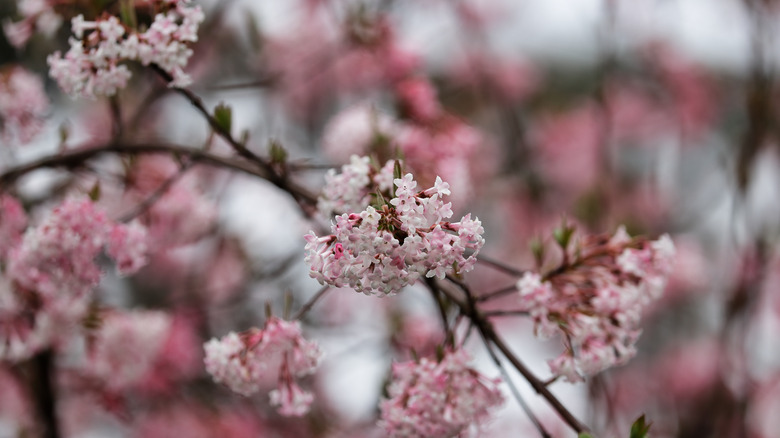The Winter-Blooming Plant That Will Provide Nectar For Hummingbirds
Winter can feel a little dreary, especially in the garden when most plants have tucked themselves away until spring. But there's one special plant that refuses to wait for warmer weather, bringing a burst of life and color during the coldest months – the 'Pink Dawn' Bodnant Viburnum (Viburnum x bodnantense 'Pink Dawn' ). Not only is it a stunning winter-bloomer, but it also has flowers that hummingbirds love at a time when most other flowers are dormant.
This hardy shrub stands out with its clusters of pink flowers that bloom from late fall through early spring. As the name suggests, the blooms appear in soft, rosy hues, and as they open, they release a sweet fragrance that's noticeable even on crisp winter days. Though 'Pink Dawn' is a pretty addition to any garden, it's even more beneficial to hummingbirds. These tiny, energetic birds rely on nectar year-round, and finding sources during winter can be a challenge. That's where this viburnum comes to the rescue. The shrub's blossoms provide a much-needed energy source, enticing hummingbirds to your garden and keeping them fueled when other plants aren't in bloom.
How to grow and care for Viburnum 'Pink Dawn'
Viburnum 'Pink Dawn' is surprisingly low-maintenance once established, thriving in a variety of conditions. It prefers full sun to partial shade and grows best in well-draining soil. Though the shrub is tolerant of different growing conditions, it cold-tolerant in USDA Hardiness zones 5 through 8, where it can handle colder temperatures while still blooming.
Pruning isn't a major concern for this plant, but trimming back any dead or damaged branches in late spring after flowering will help keep it healthy and looking its best. Another tip is to ensure it has consistent moisture, especially during its early growth stages, though once mature, it can tolerate some drought. In addition to attracting hummingbirds, 'Pink Dawn' also draws in bees and butterflies, making it a great all-around choice for pollinator-friendly gardens. Following the blooms, its berries attract birds in the later seasons, offering year-round wildlife support.

